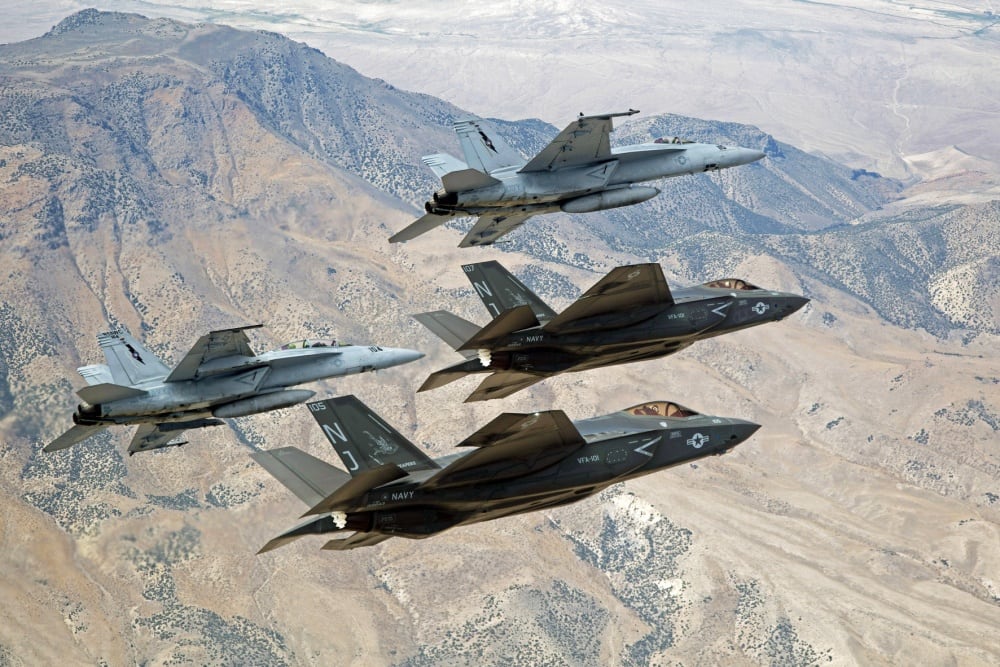RENO, Nev. — The U.S. Navy has concluded no significant environmental harm would come from its proposed tripling of the size of a Nevada bombing training range, a massive expansion opposed by neighboring tribes, conservationists and at least one Democratic presidential candidate.
Adding more than 1,000 square miles (2,589 square kilometers) to the range at Naval Air Station Fallon 65 miles (104 kilometers) east of Reno is critical to meeting combat training needs for modern aircraft and weapons systems that have outgrown training capabilities over the past two decades, the Navy says.
Critics say that in addition to adversely impacting fish and wildlife, the expansion would restrict access to public land for hunters, ATV riders and back-country explorers, including at a national wildlife refuge.
The expanded range would cover an area half the size of the state of Delaware.
RELATED

The Navy’s final environmental impact statement issued Friday says the preferred alternative would have no significant impacts on cultural or biological resources, including only “minimal” impacts on the imperiled greater sage grouse.
However, it acknowledged the Nevada Department of Wildlife's concerns about potential impacts of increased low-level overflights on grouse, so it's proposing to fund a study by the department to monitor the bird's mating behavior during flights.
The Navy scheduled an informational meeting on the plans Jan. 28 at the Fallon Convention Center. A formal record of decision is expected later this year.
An earlier Navy analysis concluded its ability to train with newer weapons systems is severely restricted by the range's current size, which hasn't changed substantially since the 1990s when older aircraft tended to fly missions at altitudes of about 10,000 feet (3,050 meters) and approach targets from within 5 miles (8 km).
Modern aircraft fly at about 30,000 feet (9,150 meters), approaching from as far out as 12 miles (19 km).
"Expanding the (range) for the first time in two generations is absolutely essential to our national security, enabling our country's sailors and Marines to prepare for today's threats," said Lucien Niemeyer, the Navy's acting secretary of energy, installations and environment.
"Our war-fighters must be ready at a moment's notice to effectively respond to more advanced aircraft and weaponry to defeat all potential adversaries," he said in a statement Friday.
Patrick Donnelly, Nevada state director at the Center for Biological Diversity, said the Trump administration "is trying to turn Nevada's precious public lands into a bombing range to expand the military-industrial complex."
“The Navy’s planned land seizure threatens to devastate greater sage grouse breeding areas and migratory bird habitat at Stillwater National Wildlife Refuge,” he said.
Sen. Elizabeth Warren, D-Mass., who has campaigned for president multiple times in Nevada, said the Navy has failed to meaningfully consult with the Fallon Paiute-Shoshone Tribe about expansion concerns.
"That's unacceptable. As president, I'll seek Tribal Nations' free, prior, informed consent for decisions affecting their lands," Warren tweeted Wednesday with a link to a tribal resolution condemning the expansion.
The tribe says "since time immemorial" it has engaged in religious and cultural ceremonies on the ancestral lands that have been harmed by bombing, munitions, sonic booms and low-altitude flyovers.
The Navy "is proposing to expand these horrible activities four-fold," the National Congress of American Indians said in the resolution approved in October.
The Navy’s preferred alternative would ask Congress to renew the withdrawal of 316 square miles (818 sq. km) of public land that make up the current range, withdraw an additional 940 square miles (2,434 sq. km) of federal land for 25 years and acquire 102 square miles (264 sq. km) of private or state-owned land.
The Fallon training complex is the Navy’s premier aviation training range, supporting aviation and ground training, including live-fire training.
All naval strike aviation units and some Navy SEALS train at Fallon before deployment.
Navy Times editor’s note: You can read the entire final draft of the environmental impact study here.




